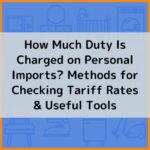What is the Sales Tax Rate in the United States? An Overview of Rates and Taxable Items by State
2024-05-11
- This article is for reference only as it is merely a translated version of the Japanese article below.
アメリカの消費税は何%?各州の税率・課税対象品目を一覧表で解説! (Japanese version)
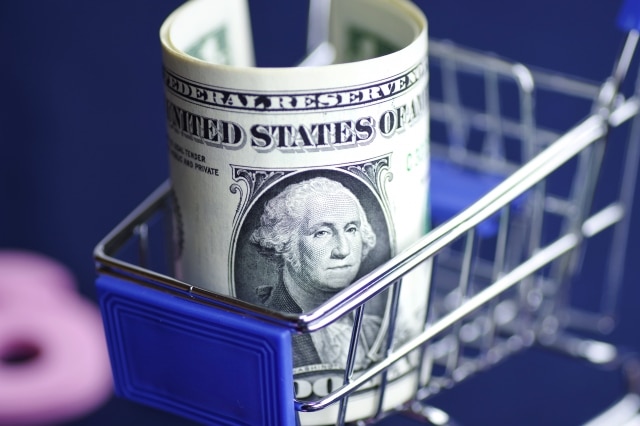
The United States is known for its vast territory and diverse culture, but its economic system also varies significantly from state to state, especially in terms of sales tax rates, which are crucial when traveling or shopping.
This article provides a detailed explanation of the sales tax rates and taxable items in each U.S. state, along with a handy chart. Knowing the differences in sales tax rates across states can make shopping and traveling in the U.S. more cost-effective!
Additionally, two debit cards that make overseas travel and online shopping more affordable are introduced.
What is Sales Tax in the U.S.?
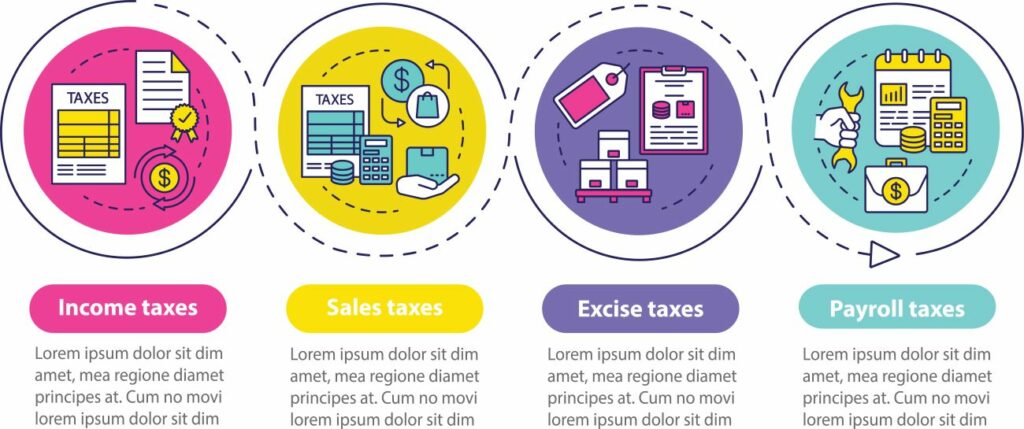
In the U.S., “sales tax” differs from the general notion of “consumption tax” as there is no unified national consumption tax.
Instead, sales taxes are imposed at the state and local levels on the purchase of goods and services.
Why the U.S. Does Not Have a National Consumption Tax
The lack of a national consumption tax in the U.S. can be primarily attributed to two factors:
1. The political structure of the U.S. allows states the autonomy to set their own tax policies tailored to their economic conditions and policies. Introducing a federal consumption tax could interfere with state powers and undermine state autonomy.
2. In the U.S., indirect taxes such as consumption tax are considered a significant burden on new or indebted businesses. The American ethos values independence, and frequent new business startups are a part of this. Imposing consumption taxes could potentially lead to business failures.
Unlike in Japan, where small businesses that have been established for over three years and have sales exceeding 10 million JPY are required to pay consumption tax, in the U.S., the payment of such indirect taxes is generally viewed as detrimental to businesses and the overall economy. It is believed that supporting businesses and improving economic flow contributes to national growth, thus the introduction of a consumption tax is seen as counterproductive.
From this perspective, the U.S. continues to refrain from adopting a national consumption tax, instead allowing each state to implement its own sales tax system.
Differences Between U.S. Sales Tax and Japanese Consumption Tax
The primary difference between the U.S. sales tax and the Japanese consumption tax lies in the scope of taxation and the management system. In Japan, the consumption tax is uniformly applied across the country at a standard rate to almost all goods and services. In contrast, in the U.S., sales tax rates vary by state, and the taxable items can also differ significantly from state to state, resulting in varying tax amounts for the same item depending on the state of purchase. Additionally, sales tax in the U.S. is managed by state and local governments.
How Does U.S. Sales Tax Work?
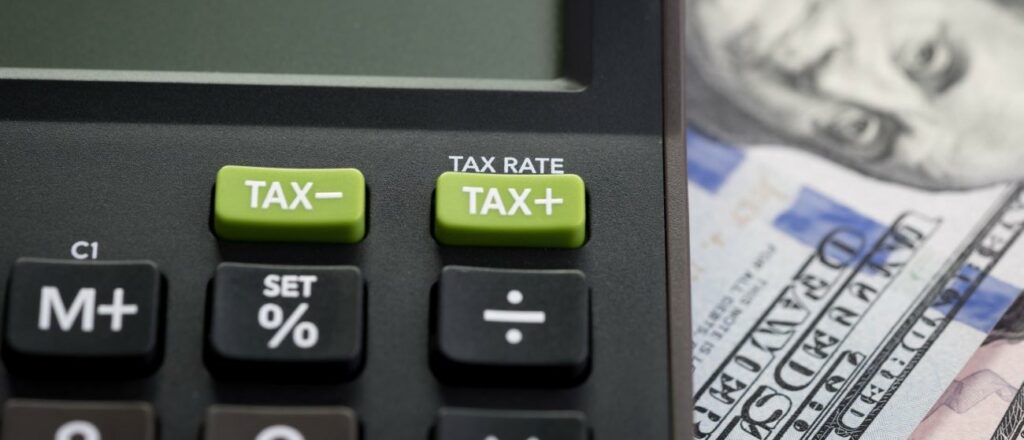
Let’s now delve further into how sales tax works in the U.S.
U.S. Sales Tax Rates
In the U.S., sales tax (referred to as “consumption tax” in this context) varies by state. Some states have no sales tax at all, while others impose rates ranging from a few percent up to nearly 10%. Furthermore, some local jurisdictions impose additional local sales taxes on top of the state tax.
The method of calculation involves applying the state-determined tax rate to the price of the goods at the time of purchase. If there is a discount, the tax rate is applied to the discounted price. Therefore, the amount paid at the store includes the tax.
Taxable Items Under U.S. Sales Tax
The items subject to sales tax also vary by state. Generally, most new goods are subject to sales tax, but essentials like groceries, medicines, and clothing may be exempt or taxed at a reduced rate in some states.
Typically, items not subject to sales tax include (varies by state):
- Homes and real estate
- Materials used for manufacturing goods (e.g., ingredients purchased by restaurants)
- Goods purchased for resale
- Gift cards
- Food purchased for consumption at home
- Professional services such as those provided by doctors or lawyers
Moreover, the taxation of services can be more complex, with certain services being taxed in some states but not in others.
For example, meals at restaurants often incur taxes, while beauty salons and repair services may be taxed differently depending on the state.
U.S. Sales Tax Reporting and Payment Methods
In the United States, sales tax is paid by customers to the stores or businesses at the time of purchasing goods or services. These stores or businesses are then responsible for reporting and remitting the collected taxes to the state government at designated intervals. The frequency of these reports can be monthly, quarterly, or annually, depending on the volume of sales and state regulations. Typically, payments are made online, and businesses must report the details of their sales and the taxes collected to the state’s revenue department.
Additionally, there is a tax known as “use tax,” which applies to purchases where sales tax has not been collected.
Use tax is paid by the purchaser on goods or services that were not taxed at the time of purchase. For instance, if someone buys goods in another state where no tax was charged, or online where no tax was applied, and then uses those goods in their home state, they are responsible for calculating and paying the use tax themselves.
The calculation of use tax is generally based on the sales tax rate of the purchaser’s home state. For example, if the sales tax rate in their state is 8%, they would multiply the price of the goods by 8% and pay that amount as tax.
The reporting and payment of use tax are typically carried out through the state’s revenue agency. In many states, use tax is declared and paid together with the annual income tax return.
The purpose of the use tax is to maintain a fair tax system. It aims to prevent consumers from avoiding taxes by purchasing goods in tax-exempt areas and using them in places where taxes are normally charged.
However, the system for use tax is quite complex, and there is some doubt as to whether it is always accurately reported and paid.
State Sales Tax and Taxable Items Overview
As of January 2024, here is a list of the sales tax rates and average local sales taxes, along with the taxable items for each state. Items marked with a circle are tax-exempt.
| State | Sales Tax | Average Local Tax Rate | Total Tax Rate | Tax Exempt | |||
| Groceries | Prescription Drugs | Over-the-Counter Medicines | Clothing | ||||
| Arkansas | 6.50% | 2.96% | 9.46% | 〇 | |||
| Iowa | 6.00% | 0.94% | 6.94% | 〇 | 〇 | ||
| Idaho | 6.00% | 0.02% | 6.02% | 〇 | |||
| Alaska | 0.00% | 7.00% | 7.00% | No statewide general sales tax | |||
| Alabama | 4.00% | 5.25% | 9.25% | 〇 | |||
| Arizona | 5.60% | 2.77% | 8.37% | 〇 | 〇 | ||
| Illinois | 6.25% | 2.57% | 8.82% | ||||
| Indiana | 7.00% | 0.00% | 7.00% | 〇 | 〇 | ||
| Wisconsin | 5.00% | 0.43% | 5.43% | 〇 | 〇 | ||
| West Virginia | 6.00% | 0.55% | 6.55% | 〇 | 〇 | ||
| Oklahoma | 4.50% | 4.48% | 8.98% | ||||
| Ohio | 5.75% | 1.49% | 7.24% | 〇 | 〇 | ||
| Oregon | 0.00% | 0.00% | 0.00% | No statewide general sales tax | |||
| California | 7.25% | 1.57% | 8.82% | 〇 | 〇 | ||
| Kansas | 6.50% | 2.16% | 8.66% | 〇 | |||
| Guam | 0.00% | 6.00% | 6.00% | ||||
| Kentucky | 6.00% | 0.00% | 6.00% | 〇 | 〇 | ||
| Connecticut | 6.35% | 0.00% | 6.35% | 〇 | 〇 | 〇 | |
| Colorado | 2.90% | 4.88% | 7.78% | 〇 | 〇 | ||
| District of Columbia | 6.00% | 0.00% | 6.00% | 〇 | 〇 | 〇 | |
| South Carolina | 6.00% | 1.43% | 7.43% | 〇 | 〇 | ||
| South Dakota | 4.50% | 1.90% | 6.40% | ||||
| Georgia | 4.00% | 3.40% | 7.40% | 〇 | |||
| Texas | 6.25% | 1.95% | 8.20% | 〇 | 〇 | 〇 | |
| Tennessee | 7.00% | 2.55% | 9.55% | ||||
| Delaware | 0.00% | 0.00% | 0.00% | No statewide general sales tax | |||
| New Jersey | 6.62% | 0.00% | 6.62% | 〇 | 〇 | 〇 | 〇 |
| New Hampshire | 0.00% | 0.00% | 0.00% | No statewide general sales tax | |||
| New Mexico | 5.00% | 2.72% | 7.72% | 〇 | |||
| New York State | 4.00% | 4.52% | 8.52% | 〇 | 〇 | 〇 | 〇 (Up to $110) |
| Nevada | 6.85% | 1.38% | 8.23% | 〇 | 〇 | ||
| Nebraska | 5.50% | 1.45% | 6.95% | 〇 | |||
| North Carolina | 4.75% | 2.24% | 6.99% | 〇 | |||
| North Dakota | 5.00% | 1.97% | 6.97% | 〇 | |||
| Virginia | 5.30% | 0.45% | 5.75% | 〇 | 〇 | ||
| Vermont | 6.00% | 0.30% | 6.30% | 〇 | 〇 | 〇 | 〇 |
| Hawaii | 4.00% | 0.44% | 4.44% | ||||
| Florida | 6.00% | 1.02% | 7.02% | 〇 | 〇 | ||
| Pennsylvania | 6.00% | 0.34% | 6.34% | 〇 | 〇 | 〇 | 〇 |
| Massachusetts | 6.25% | 0.00% | 6.25% | 〇 | 〇 | 〇 (Up to $175) | |
| Michigan | 6.00% | 0.00% | 6.00% | 〇 | 〇 | ||
| Mississippi | 7.00% | 0.07% | 7.07% | ||||
| Missouri | 4.22% | 4.11% | 8.33% | ||||
| Minnesota | 6.87% | 0.61% | 7.48% | 〇 | 〇 | 〇 | |
| Montana | 0.00% | 0.00% | 0.00% | No statewide general sales tax | |||
| Maine | 5.50% | 0.00% | 5.50% | 〇 | 〇 | ||
| Maryland | 6.00% | 0.00% | 6.00% | 〇 | 〇 | ||
| Utah | 6.10% | 1.09% | 7.19% | 〇 | |||
| Louisiana | 4.45% | 5.10% | 9.55% | ||||
| Rhode Island | 7.00% | 0.00% | 7.00% | 〇 | 〇 | 〇 (Up to $250) | |
| Wyoming | 4.00% | 1.36% | 5.36% | 〇 | 〇 | ||
| Washington | 6.50% | 2.36% | 8.86% | 〇 | 〇 | ||
States Without Sales Tax
There are several U.S. states that do not collect sales tax (equivalent to consumption tax). In these states, it is common for no additional tax to be imposed on the purchase of goods and services.
The states without sales tax are as follows:
- Delaware
- Montana
- New Hampshire
- Oregon
In these states, other sources of revenue, such as property taxes or income taxes, are emphasized instead of sales tax.
Alaska does not have a statewide sales tax, but some cities, such as Juneau and Anchorage, have set local sales taxes of up to about 7%.
Sales Tax Examples in Major U.S. States
This section provides an overview of the sales tax situations in major U.S. cities frequently visited by Japanese tourists.
New York
The statewide sales tax rate in New York is 4%, but additional local sales taxes may be applied by local governments. For example, in New York City, the state tax of 4% is supplemented by a city tax of 4.5% and a Metropolitan Commuter Transportation District (MCTD) surcharge of 0.375%, totaling a combined tax rate of 8.875%.
New York State sales tax: 4%
New York City sales tax: 4.5%
Metropolitan Commuter Transportation District tax: 0.375%
Total tax rate: 8.875%
The MCTD surcharge is an additional tax imposed in parts of New York State to fund public transportation.
There are also tax exemptions for specific items, such as clothing and footwear up to $110.
Los Angeles
In Los Angeles, located in California, the base state sales tax rate is 7.25%. However, local county taxes of an additional 2.25% are applied, resulting in a total sales tax rate of 9.50%.
California exempts certain items like groceries and prescription drugs from sales tax, offering tax exemptions or reductions for specific goods.
Florida
The base sales tax rate in Florida is 6%. Local governments, however, may impose additional taxes ranging from 0.5% to 2.5%, with some areas seeing a total tax rate of up to 8.5%. For instance, Miami-Dade County applies a total sales tax of 7%.
Items exempt from taxation include food, prescription medications, and over-the-counter drugs. Florida also offers tax reductions on certain agricultural and industrial supplies and annually sets a “tax-free holiday” period during which specific items such as clothing and school supplies are exempt from sales tax.
Updates on U.S. Sales Tax
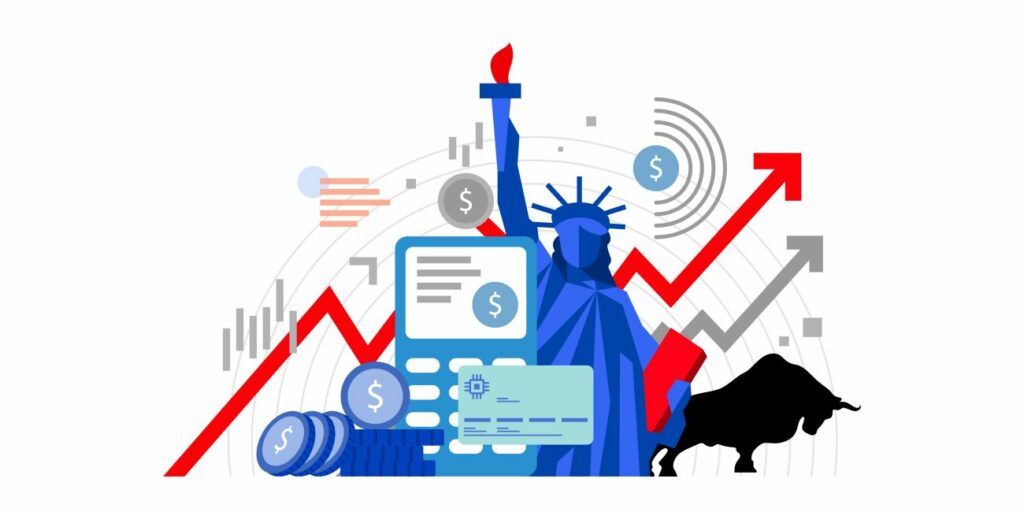
The frequency of updates to sales tax rates in the U.S. is considerably higher than in Japan. Over the past year, there have been more than 1250 changes across various states, cities, and counties, and as of February 2024, 257 changes are expected in 27 states.
To stay informed of the correct current rates, it is necessary to check the websites of state revenue departments and local governments. Additionally, new taxation rules are frequently introduced, particularly concerning digital goods and online services.
Some states also establish “tax-free holidays,” during which sales taxes are waived on specific items. Gathering information about these opportunities is crucial to not miss out on potential savings.
State revenue agencies publish information about tax-free holidays on their websites. Searching with keywords like “tax-free holiday” or “sales tax holiday” along with the state name can provide access to official state information.
Retail stores often hold sales corresponding with these tax-free holidays, allowing for verification and savings directly at the point of purchase.
Because sales tax in the U.S. can vary based on economic and political changes, it is essential always to have the most up-to-date information.
List of State Revenue Departments in the U.S.
For the latest information on sales tax in the U.S., please refer to the official websites of each state’s revenue department.
U.S. Sales Tax Q&A
If I buy from an American online shop from Japan, will I be charged sales tax?
When purchasing from American online shops from Japan, sales tax is generally not collected.
This is because most U.S. states do not impose sales tax on customers outside the country. Additionally, sales tax is not included in the shipping costs from the U.S. to Japan.
However, when the goods arrive in Japan, import duties and consumption tax may be applied. For expensive goods, it’s important to check with Japanese customs beforehand as customs duties and consumption tax may apply.
It’s a good practice to check the final confirmation screen when purchasing from American online stores to see if sales tax has been charged and to gather information about any duties or taxes that may be levied in Japan.
Recommended Cards for Payments in the U.S.
For those who frequently shop online in foreign currencies or want to save on exchange rates during overseas travel, the debit cards “Wise” and “Revolut” are recommended.
Let’s compare these with typical credit cards.
Regular credit cards charge a transaction fee of 1.83% to 2.6%, whereas Wise charges only 0.62%. Revolut charges between 0% and 0.5% on weekdays, with minimal fees.
Using Revolut on weekdays and Wise on weekends can minimize transaction fees!
| Revolut | Wise | Typical Credit Card | |
| Foreign Transaction Fee | Free | Free | 1.63~2.2% |
| Currency Exchange Fee JPY→USD | Weekdays Less than 750,000 JPY = 0% to less than 0.5% 750,000 JPY or more = 0.5% to less than 1% Weekends: More than 1% | 0.62% | 0.2~0.4% |
Here is what each card has to offer.
wise

Wise’s multi-currency account allows payments in various currencies, which is particularly useful for overseas travel and online shopping. It can hold multiple currencies, and you can make direct payments in foreign currencies using the Wise debit card.
For instance, if you have U.S. dollars in your account, you can directly use them to pay for online shopping. The same applies to other currencies; with one Wise card, you can pay in various currencies.
If you exchange Japanese yen to U.S. dollars at a favorable rate beforehand, you can use it economically for travel, business trips, or online shopping abroad.
Even if you don’t have the necessary currency, you can automatically exchange other currencies in your account at real-time exchange rates for your payments.
Wise’s multi-currency account and debit card are very convenient and economical tools for making payments abroad.
Revolut

Many might feel uncertain about the reliability of international shopping sites. Revolut offers an unlimited number of free disposable virtual cards, enhancing security.
With Revolut’s disposable virtual card, each payment transaction regenerates card information, making it difficult to misuse even if the card data is leaked.
This card is highly recommended for those who want to shop securely.
Revolut offers three plans: Standard, Premium, and Metal.
The top-tier Metal plan applies 1% cashback (up to 5,000 JPY), making it worthwhile if you spend 200,000 JPY, as it covers the monthly fee of 1,980 JPY.
Special Offer: 3 Months Free Premium
By applying for Revolut Premium through this page, what normally costs 980 JPY per month is now free for three months.
This is recommended for those who use international shopping sites or want to easily manage foreign currencies.
Access through the button below to get three months of Revolut Premium for free.
\ Now, just 980 yen per month, free for three months! /
Summary
This article has explained the sales tax system in the United States, with the hope that it will provide useful tips for saving money while shopping or making online purchases in the U.S.
The U.S. sales tax system is highly complex, with rates and taxable items constantly changing. The information in this article is based on data as of December 2023. For the most current tax regulations, please refer to the websites of the respective state and local tax authorities.


 Language
Language





